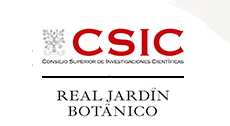Scientific Area
Abstract Detail
Nº613/368 - Flowers on an adaptive plateau: which floral traits mediate specialization in buzz-pollinated Melastomataceae?
Format: ORAL
Authors
Benjamin Lazarus1, Ashlee Kerber2, Agnes Dellinger1
Affiliations
1 Department of Botany and Biodiversity Research, University of Vienna, Austria.
2 Ecology and Evolutionary Biology, University of Colorado Boulder, USA.
Abstract
While the ecology and evolution of plant-pollinator interactions has often been studied through the comparison of closely-related species differing in functional pollinator groups (e.g., bees and birds), many plant lineages exhibit a single pre-dominant pollination strategy. Buzz-pollination is one such strategy, where, in the case of the plant family Melastomataceae, more than 5000 species are adapted to pollination by bees capable of producing specialized vibrations on flowers. While many buzz-pollinated flowers across angiosperms converge into a single main phenotype (Solanum-type flowers), Melastomataceae exhibit highly diverse flowers differing in color and scent profiles, corolla shapes, sizes, and the architecture and biomechanics of stamens. To date, we know comparatively little about how unbalanced patterns of flower diversity and uniformity arise across plant lineages, and how they play out in communities of co-flowering species.
In this talk, we will introduce patterns of macroevolutionary diversity of Melastomataceae flowers, and present new results on how flower traits may contribute to pollination niche partitioning and specialization despite substantial overlap in buzzing bee pollinators among closely-related, co-flowering Melastomataceae species. We will compare trait and pollinator data across selected Melastomataceae communities from the South-Eastern USA, Ecuador and Brazil, covering a broad range of floral phenotypes and phylogenetic diversity of the group. By analyzing the links between buzz-pollination niche specialization, flower traits commonly considered important in pollinator attraction (scent, color, reward) and pollen transfer (flower-pollinator fit), we aim at better resolving the processes underlying the evolution of floral diversity within pollination strategies.




